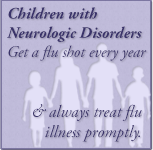Diagnosing Tic Disorders
The American Psychiatric Association’s Diagnostic and Statistical Manual of Mental Disorders, Fifth Edition (DSM-5)1 is used by health professionals to help diagnose tic disorders.
Tics are sudden twitches, movements, or sounds that people do repeatedly. People who have tics cannot stop their body from doing these things. For example, a person with a motor tic might keep blinking over and over again. Or, a person with a vocal tic might make a grunting sound unwillingly.
Three tic disorders are included in the DSM-5:
- Tourette’s disorder (also called Tourette Syndrome [TS])
- Persistent (also called chronic) motor or vocal tic disorder
- Provisional tic disorder
The tic disorders differ from each other in terms of the type of tic present (motor or vocal, or a combination of both), and how long the symptoms have lasted. People with TS have both motor and vocal tics, and have had tic symptoms for at least 1 year. People with persistent motor or vocal tic disorders have either motor or vocal tics, and have had tic symptoms for at least 1 year. People with provisional tic disorders can have motor or vocal tics, or both, but have had their symptoms less than 1 year.
Here are the criteria in shortened form. Please note that they are presented for your information only and should not be used for self-diagnosis. If you are concerned about any of the symptoms listed, you should consult a trained health care provider with experience in diagnosing and treating tic disorders.
Tourette Syndrome (TS)
For a person to be diagnosed with TS, he or she must:
- have two or more motor tics (for example, blinking or shrugging the shoulders) and at least one vocal tic (for example, humming, clearing the throat, or yelling out a word or phrase), although they might not always happen at the same time.
- have had tics for at least a year. The tics can occur many times a day (usually in bouts) nearly every day, or off and on.
- have tics that begin before he or she is 18 years of age.
- have symptoms that are not due to taking medicine or other drugs or due to having another medical condition (for example, seizures, Huntington disease, or postviral encephalitis).
Persistent (Chronic) Motor or Vocal Tic Disorder
For a person to be diagnosed with a persistent tic disorder, he or she must:
- have one or more motor tics (for example, blinking or shrugging the shoulders) or vocal tics (for example, humming, clearing the throat, or yelling out a word or phrase), but not both.
- have tics that occur many times a day nearly every day or on and off throughout a period of more than a year.
- have tics that start before he or she is 18 years of age.
- have symptoms that are not due to taking medicine or other drugs, or due to having a medical condition that can cause tics (for example, seizures, Huntington disease, or postviral encephalitis).
- not have been diagnosed with TS.
Provisional Tic Disorder
For a person to be diagnosed with this disorder, he or she must:
- have one or more motor tics (for example, blinking or shrugging the shoulders) or vocal tics (for example, humming, clearing the throat, or yelling out a word or phrase).
- have been present for no longer than 12 months in a row.
- have tics that start before he or she is 18 years of age.
- have symptoms that are not due to taking medicine or other drugs, or due to having a medical condition that can cause tics (for example, Huntington disease or postviral encephalitis).
- not have been diagnosed with TS or persistent motor or vocal tic disorder.
For More Information
Tourette Association of America
Reference
- American Psychiatric Association: Diagnostic and Statistical Manual of Mental Disorders, 5th edition. Arlington, VA., American Psychiatric Association, 2013.
- Page last reviewed: May 11, 2017
- Page last updated: May 26, 2016
- Content source:



 ShareCompartir
ShareCompartir